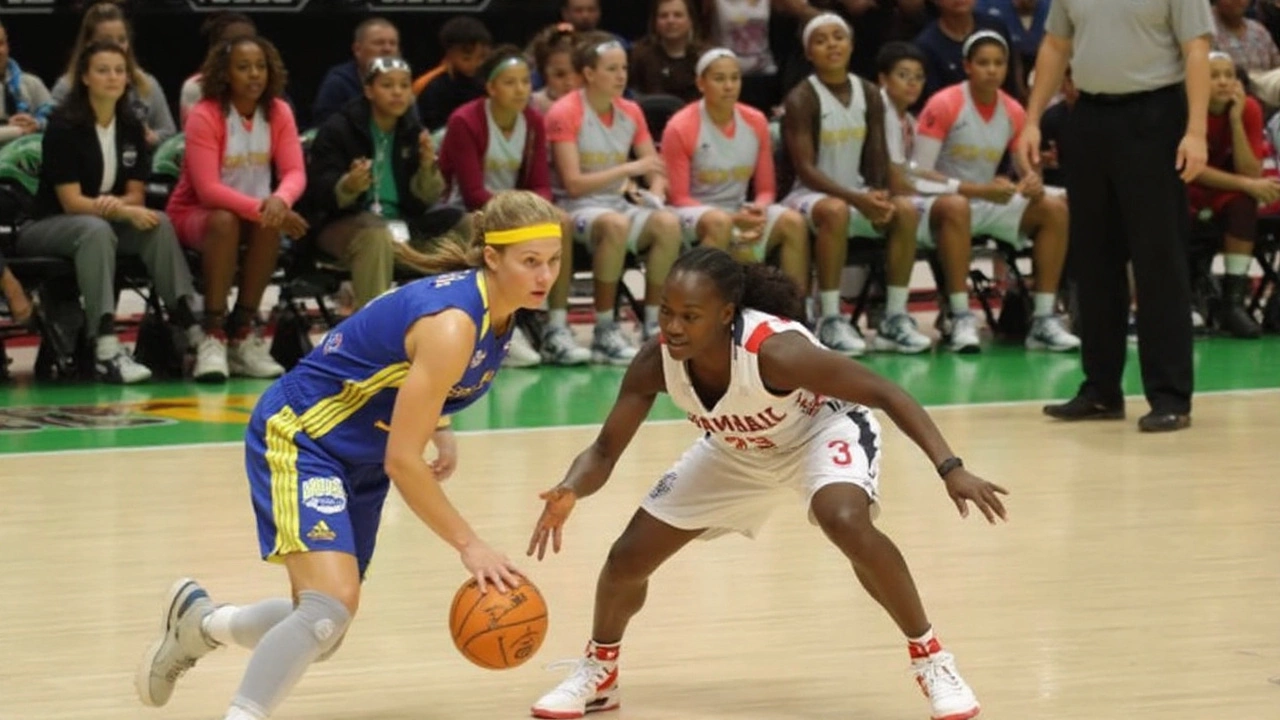WNBA Playoff Format – How the Women’s NBA Championship Works
When learning about WNBA playoff format, the system that decides how teams vie for the championship in the Women's National Basketball Association. Also known as WNBA postseason structure, it shapes every team's season goal. The format determines who advances, how many games are played, and when the title is decided. If you're searching for the WNBA playoff format details, you’ve landed at the right spot.
First, understand the league itself. The WNBA, the top professional women’s basketball league in the United States runs a 12‑team schedule split into Eastern and Western conferences. Each team plays a set number of regular‑season games, and their win‑loss record creates the regular season standings, a ranking that determines playoff seedings and home‑court advantage. Those standings are the first key input for the playoff format.
Key Components of the Format
The format has three main parts: seedings, series length, and the bracket path. Playoff seedings, the order in which teams are placed based on their regular‑season record, decide who gets a first‑round bye and who faces the toughest early matchups. Typically, the top two teams in each conference earn a bye, while the third‑through‑sixth seeds play a single‑elimination game. This single‑game round adds drama and rewards regular‑season excellence.
Next, the playoff series, the set of games played between two teams to determine who moves on, shift from single‑elimination to best‑of‑three. The first‑round winners join the top‑seeded teams in the conference semifinals, which are best‑of‑three contests. Winning two out of three games advances a team to the conference finals, also a best‑of‑three. Finally, the conference champions meet in the WNBA Finals, a best‑of‑five series that crowns the league champion.
These three pieces create a clear semantic chain: the regular‑season standings produce the seedings, the seedings determine which teams enter the single‑elimination round, and the series length escalates as the playoffs progress. In other words, "WNBA playoff format includes seedings based on regular‑season standings," "seedings require a single‑elimination round for lower seeds," and "the format expands to best‑of‑three and best‑of‑five series for later rounds." This chain explains why every regular‑season game matters.
Another important factor is home‑court advantage. The higher seed hosts more games in each series, giving them the familiar locker room, crowd support, and reduced travel fatigue. In a best‑of‑three, the higher seed hosts games one and three (if needed), while the lower seed hosts game two. For the best‑of‑five Finals, the higher seed gets games one, two, and five. This advantage is a direct result of the seedings, reinforcing the link between regular‑season performance and postseason success.
Fans often wonder whether the format will change. The league reviews the structure each season, looking at competitiveness, TV ratings, and player feedback. For example, a recent discussion considered adding a play‑in tournament to give more teams a chance, similar to the NBA’s approach. Any alteration would still revolve around the core entities: standings, seedings, and series length. Keeping those connections clear helps fans follow the changes without getting lost.
Players also feel the impact. Star athletes aim for a top‑two seed to skip the high‑pressure single‑elimination round. That extra rest can be the difference between a deep run and an early exit. Coaches adjust rotations and load management during the regular season to secure those coveted seeds. The format therefore influences strategy long before the first playoff whistle blows.
From a broadcast perspective, the format creates a predictable schedule. Networks know when single‑elimination games will happen, when best‑of‑three series start, and when the best‑of‑five Finals conclude. This predictability helps advertisers plan campaigns and fans plan their viewing parties. The format’s structure thus links directly to the business side of the sport.
In practice, the WNBA playoff format offers a blend of excitement and fairness. The single‑elimination round adds a “win‑or‑go‑home” thrill, while the best‑of‑three series give teams a chance to adjust tactics mid‑stream. The best‑of‑five Finals provide a longer narrative arc, allowing storylines to develop fully. This balance keeps the postseason engaging from start to finish.
Below you’ll find a curated set of articles that explore each piece of the puzzle in depth. Whether you want to see how seedings are calculated, why the league chose best‑of‑three for the semis, or what the future might hold for the format, the posts below cover it all. Dive in to get the details you need to follow the WNBA postseason with confidence.

2025 WNBA Playoffs: Seven Firsts and Fierce Parity Rewrite the Postseason
The 2025 WNBA Playoffs are breaking new ground: the first best-of-seven Finals, a revamped playoff format, and the Golden State Valkyries reaching the postseason in their debut year. Aces, Liberty, Lynx, Dream, and more look like real contenders. Early series tilted toward top seeds, but upsets feel inevitable. Depth, health, and adjustments may decide everything.
Read more